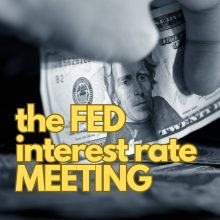Australian CPI Inflation Grew Less Than Expected in Q2 2023
Have you heard the latest news about Australian CPI inflation? It seems that in Q2 2023, it grew less than expected. I know, it’s quite surprising! The consumer price index inflation only grew 0.8% during that period, which is lower than the estimated 1%. This marks a significant slowdown from the 1.4% growth seen in Q1.
But here’s the twist – on an annual basis, CPI inflation actually grew 6% in Q2, exceeding expectations for growth of 5.4%. While this may sound impressive, the softer CPI readings suggest a pause in the Reserve Bank of Australia’s rate hike cycle. It seems like they may have to reconsider their plans for now.
Interestingly, despite the slowdown, annual inflation remains well above the RBA’s 2% target range. This means that there’s still some work to be done in bringing inflation back to a more manageable level. The RBA is hopeful that inflation will reach its target by mid-2025, but in the meantime, they anticipate further cooling of economic growth.
So, if you want to learn more about this topic and dive deeper into the factors influencing Australian CPI inflation, keep reading the article. It’s fascinating to see how these economic indicators shape our everyday lives.
Overview of Australian CPI inflation in Q2 2023
Australian consumer price index (CPI) inflation grew less than expected in Q2 2023. The CPI inflation rate for the quarter stood at 0.8%, which was lower than estimated growth of 1% and a significant slowdown compared to the 1.4% inflation recorded in the previous quarter. In contrast, annual CPI inflation exceeded expectations, growing at a rate of 6% in Q2, surpassing the anticipated growth of 5.4%.
Lower than expected growth in Q2 CPI inflation
Despite the overall growth in CPI inflation, the 0.8% rate for Q2 fell short of expectations. Economists had estimated a growth rate of 1%, indicating a mild disappointment in the quarter’s inflation figures. Moreover, the Q2 inflation rate marked a slower pace of growth compared to the previous quarter, where inflation stood at 1.4%. This downward trajectory suggests a potential deceleration in the rate of price increases for goods and services within the Australian economy.
Comparison to estimates and previous quarter’s inflation
The gap between the actual Q2 CPI inflation rate and the estimated rate reflects a difference in factors contributing to inflation. Various economic indicators, including labor market conditions and supply chain disruptions, play a role in shaping inflation. Analyzing the impact of these factors on the economy can provide insights into the reasons behind the lower-than-expected growth in CPI inflation during the quarter.
Annual CPI inflation exceeds expectations
Despite the slight disappointment in Q2 CPI inflation, the annual growth rate paints a different picture. In the twelve months leading up to Q2 2023, CPI inflation surged at a rate of 6%, surpassing expectations for growth of 5.4%. This robust annual growth may be attributed to various factors, including rising energy prices, increased transportation costs, and supply chain disruptions. The higher-than-expected annual inflation poses challenges for the Reserve Bank of Australia (RBA) in managing its inflation target.
Implications for Reserve Bank of Australia’s rate hike cycle
The lower-than-expected Q2 inflation figures are likely to influence the RBA’s rate hike cycle. With inflation growth slowing down, the central bank may reevaluate its strategy of gradually increasing interest rates to counter rising inflationary pressures. The RBA’s approach to monetary policy is influenced by economic indicators like inflation, employment, and economic growth. Therefore, the softer CPI readings might prompt the RBA to consider adjusting its rate hike strategy in light of the current economic conditions.
Inflation still above target range
Despite a slight slowdown, annual CPI inflation continues to exceed the RBA’s target range of 2%. The sustained elevation in inflation poses challenges for both consumers and businesses. Higher prices erode consumers’ purchasing power and affect their ability to afford goods and services. For businesses, inflationary pressures may increase input costs and reduce profit margins. These dynamics highlight the importance of addressing inflation and finding potential measures to manage its impact on the economy.
RBA’s expectations for future inflation and economic growth
The RBA anticipates that it will take until mid-2025 to reach its 2% inflation target. This expected timeline reflects the central bank’s assessment of economic indicators and its forecast for future inflation. The RBA closely monitors factors such as wage growth, labor market conditions, and overall economic growth to gauge the trajectory of inflation. Additionally, the RBA’s projections for economic growth in the interim period indicate a further cooling of the economy.
Challenges and risks amid slower economic growth
The slower economic growth poses challenges in achieving the RBA’s inflation target. Despite efforts to stimulate economic activity, factors such as supply chain disruptions, labor market conditions, and global economic trends can hinder the pace of inflation. Additionally, there are risks associated with cooling economic growth, including job losses, reduced consumer spending, and potentially lower business investments. Policymakers need to carefully analyze these challenges and implement appropriate measures to mitigate any adverse effects on the economy.
Conclusion
Overall, the Q2 2023 CPI inflation in Australia grew less than expected. Despite the disappointment in the quarterly growth rate, annual inflation exceeded expectations. The softer CPI readings suggest a potential pause in the RBA’s rate hike cycle as policymakers reassess the current economic conditions. However, the sustained elevation in inflation poses challenges for achieving the RBA’s 2% target range. The RBA expects inflation to reach its target by mid-2025, and economic growth is likely to cool further in the interim. Careful monitoring and appropriate policy measures will be crucial in managing inflation and supporting the Australian economy in the coming months.






